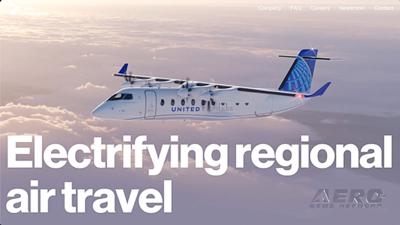System to Power ES-30 Hybrid-Electric Regional Airliner
BAE Systems, the British multinational arms, security, and aerospace concern, has partnered with Swedish plane-maker Heart Aerospace for purpose of collaboratively developing a battery system for the latter’s ES-30 regional electric aircraft.

The inchoate battery, the first-of-its-kind to be integrated into an electric conventional takeoff and landing (eCTOL) regional aircraft, will ostensibly allow Heart Aerospace’s ES-30 to operate with zero emissions and low noise.
Ehtisham Siddiqui, BAE Systems vice president and general manager of Controls and Avionics Solutions, stated: “Our industry-leading solution builds on decades of expertise delivering technologies and systems needed to progress sustainable transportation. We are delighted to collaborate with Heart Aerospace on the innovative battery system for its electric airplane.”
For more than a quarter century, BAE systems has pioneered the electrification of large, heavy-duty industrial vehicles. At present, over 15,000 of the company’s power and propulsion systems are in service across the globe. The collaboration with Heart Aerospace will leverage BAE’s experience to the benefit of both companies, the larger aerospace industry, and the global push toward decarbonization. Work on the program will be conducted at BAE’s Endicott, New York facility.
Heart Aerospace CEO Sofia Graflund set forth: “BAE Systems’ extensive experience in developing batteries for heavy-duty ground applications, and their experience in developing safety critical control systems for aerospace, make them an ideal partner in this important next step for the ES-30 and for the aviation industry. We look forward to decarbonizing air travel together.”
The ES-30 is a thirty-passenger, hybrid-electric regional airliner currently under development by Heart Aerospace. The aerodynamically-conventional, high-wing, T-tail aircraft is to be powered by four hybrid/electric motors and, carrying its full complement of thirty passengers, have an all-electric range of 108-nautical-miles and an extended reserve hybrid range of 216-nautical-miles. Carrying a 25-passenger load, the ES-30’s advertised total electric/hybrid range increases to 432-nautical-miles.
The ES-30’s design accounts for the near-future improvement of battery technologies. Ergo, the aircraft can be easily upgraded and scaled to accommodate evolving hybrid-electric powertrains. The architecture’s mutability allows for increased usable energy at a constant weight, thereby facilitating longer flight durations and expanded route options.
FMI: www.baesystems.com



































